Lant Pritchett
Blavatnik School of Government, University of Oxford
Other
This new brochure combines existing knowledge and RISE research findings into five actions that education systems can take to chart a path out of the learning crisis and toward a future that offers learning for all.
Most countries around the world have made historic progress in expanding access to schooling. However, most of the developing world is experiencing a severe learning crisis in which many youth are leaving school with shockingly low learning levels. Why? Because many children who are enrolled in school and progress from grade to grade learn little during their time there.1
There is wisdom in the saying “we will cross that bridge when we come to it.” In 2022, the global education sector has come to the bridge: now that most children are in school, the world’s focus must shift to learning.
Crossing this bridge will require fundamental changes in approaches to education. This brochure builds on existing knowledge and distils research from the Research on Improving Systems of Education (RISE) Programme, an eight- year global research endeavour, into five actions that education systems can take to chart a path out of the learning crisis and toward a future that offers learning for all.
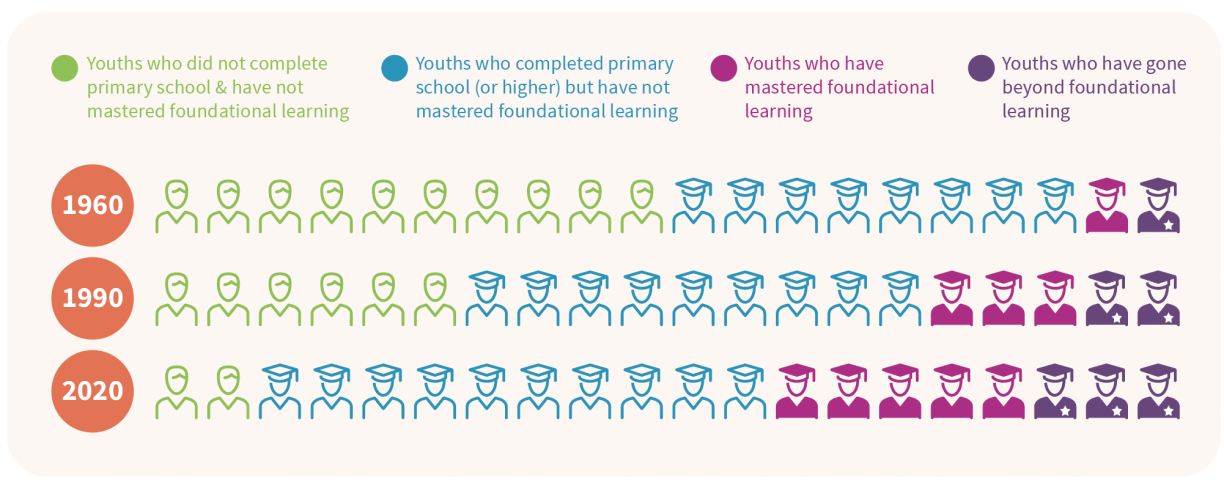
Source: Illustration informed by Le Nestour, Moscoviz, and Sandefur (2022); Pritchett and Viarengo (2021); UIS and GEM (2022); Gust, Hanushek, and Woessmann (2022)
Research suggests that change requires strong society-wide commitments to learning for all, which includes:
Focusing first on foundational skills. Systems must commit to building foundational skills so that children are prepared for subsequent learning. We are explicitly not advocating for rote memorisation, but for a focus on building deep, conceptual and procedural understanding of reading, mathematics, and other foundational skills in the short term so that children can achieve the high aspirations we hold for them in the long term. First, children learn to read; then children read to learn.2
Putting learning at the centre. Education systems must commit to learning as their central purpose, and this commitment must animate all other decisions in the system. Practically, this means framing goals in terms of learning outcomes, and acquisition of skills and capabilities, rather than relying on intermediate targets like spending, inputs, or programme implementation.3
Ensuring that foundational learning is a clear and urgent political priority. At the same time, while political commitment is necessary,4 this commitment cannot only be political. It must extend throughout society, encompassing a shared understanding among families, schools, bureaucracies, and branches of government. Learning for all will require all for learning.5
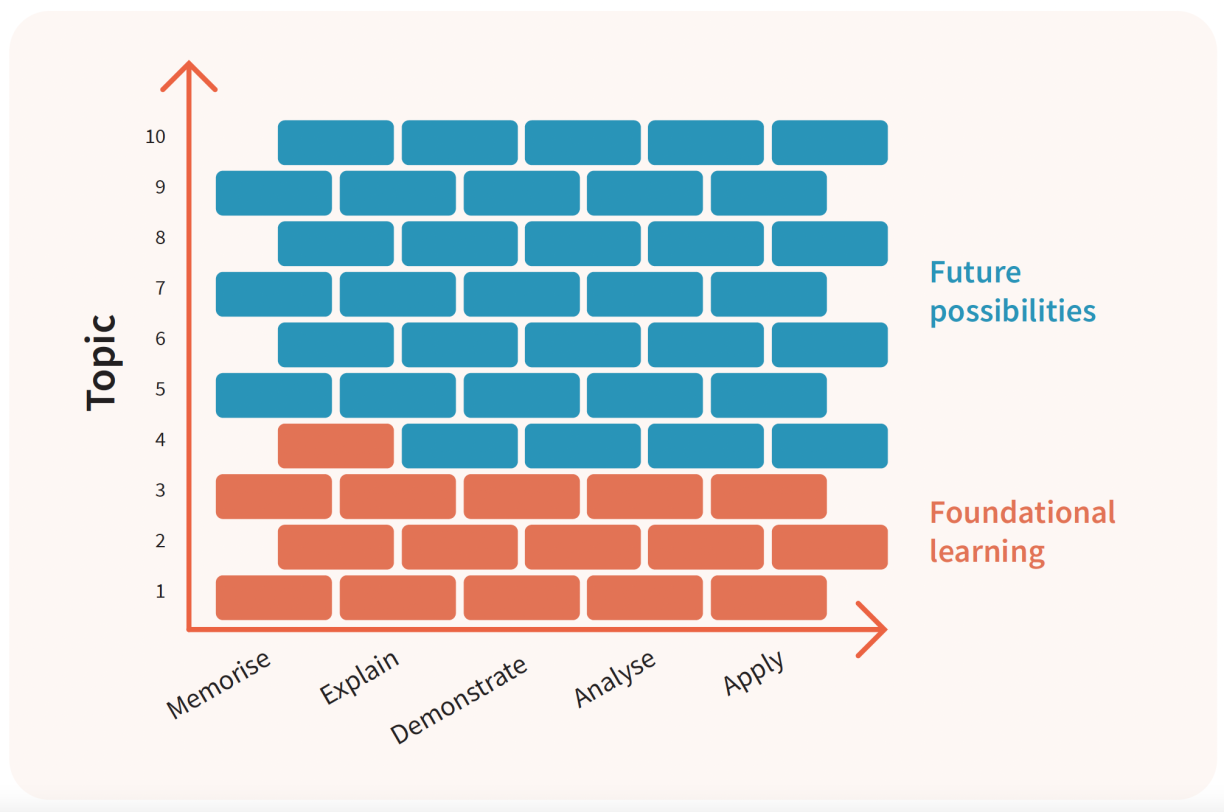
Source: Belafi, Hwa, and Kaffenberger (2020); Atuhurra and Kaffenberger (2022)
Many education systems around the world collect detailed data on school enrolments and inputs—yet many do not use data on student learning to inform policy and improve instruction. Systems should follow the “three Rs” of useful learning assessments:
Reliable. In many systems, especially where assessments are high-stakes for the student, widespread cheating distorts the results. Assessments must be reliable to serve as useful feedback on the system’s progress.6
Regular. Systems should measure learning over time, beginning in the early grades of primary school. This allows decision makers to track the pace of learning and to see when children start to fall behind and, therefore, what interventions are needed.7
Relevant. Assessments need to be relevant and helpful to the many actors in the system, from assessments that inform strategic choices to formative assessments relevant to, and integrated with, teachers’ classroom practices. Additionally, assessments must be designed to measure learning and must include measures of mastery of foundational skills. In contrast, many existing assessments are designed as tools for selection, and mainly measure pass rates or student rankings.8
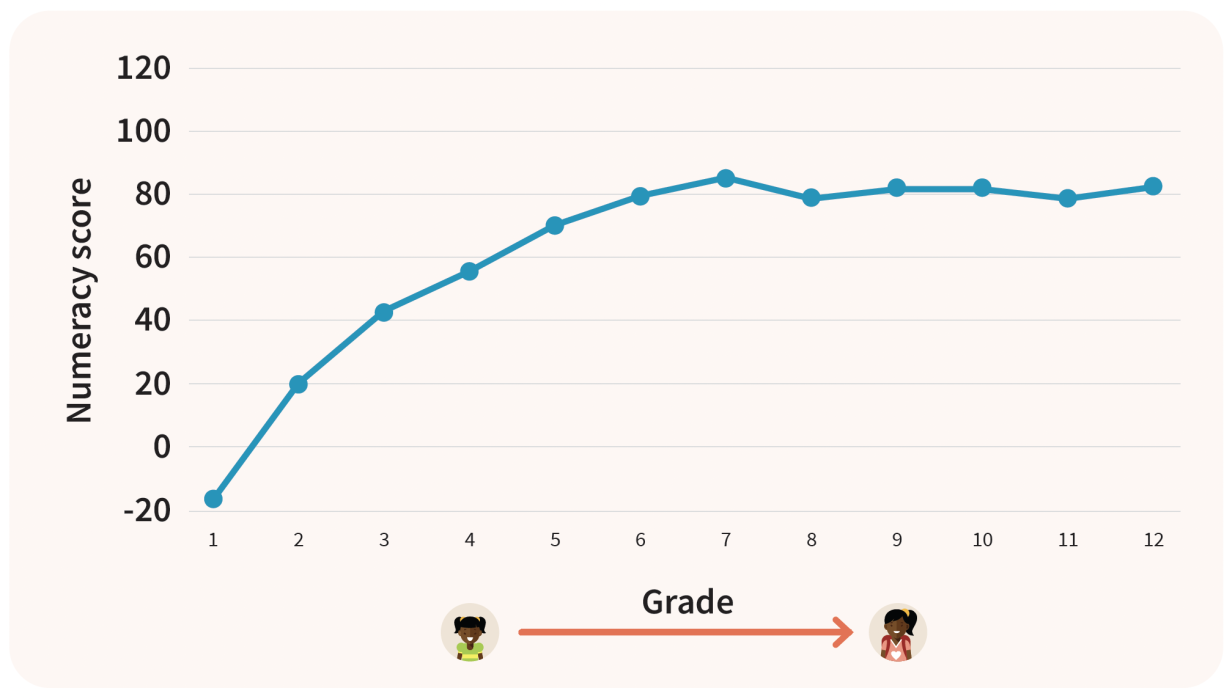
Source: Beatty et al. (2021)
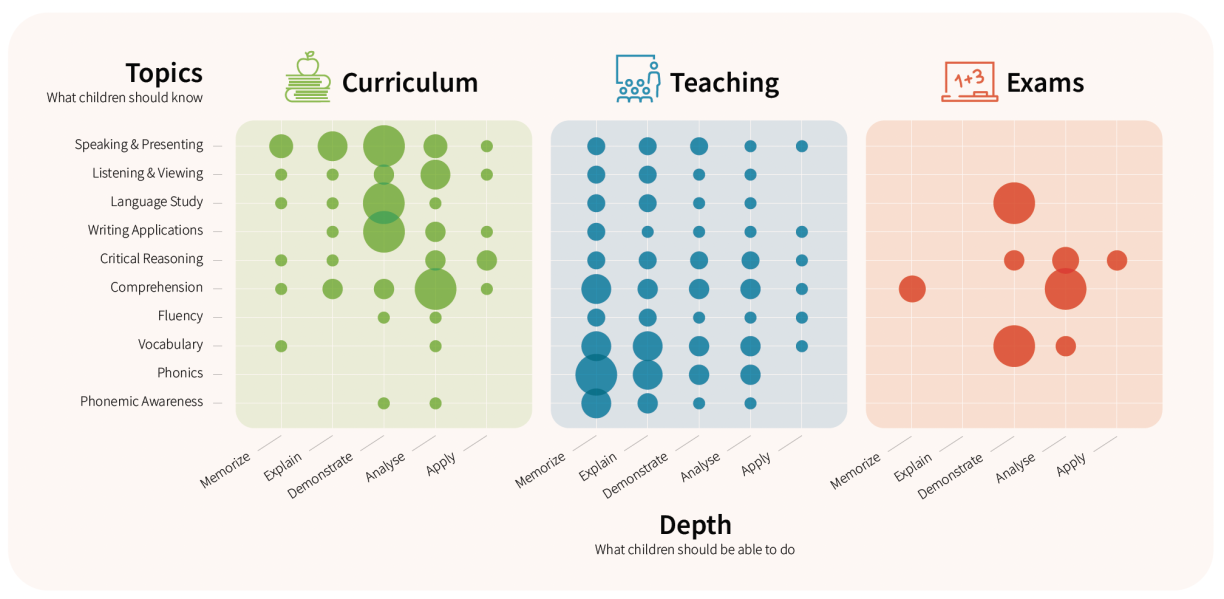
Source: Adapted from Atuhurra and Kaffenberger (2022)
In other contexts, the curriculum is misaligned with children’s learning levels and advances too quickly for all but the most advantaged students. Aligning instruction with children’s needs can substantially improve learning outcomes.11
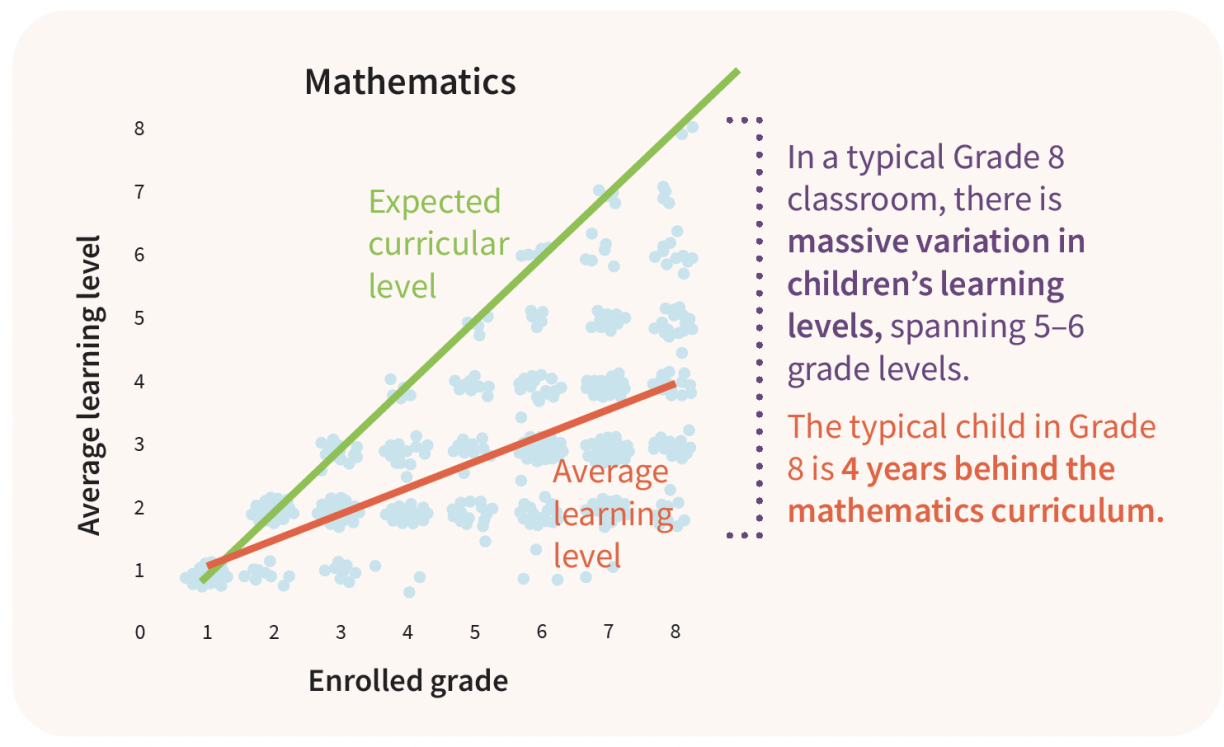
Source: Muralidharan and Singh (2019). Each dot represents 10 students.
If it doesn’t happen in the classroom, it won’t impact learning. To change classroom practices, governments and development partners need to dramatically change their focus from teachers to teaching. In practice, this means:
Refocusing professional development on the craft of teaching. Teachers need to understand and experience what effective teaching looks like, and they must receive ongoing support to build specific content knowledge and pedagogical skills associated with student learning.12
Reforming teacher career paths and compensation structures to attract, retain, and motivate quality teaching. For example, this could mean using more nuanced hiring criteria beyond degrees earned—which have little relationship to teacher quality—and being more selective with offers of long-term employment during the early phases of a teacher’s career.13
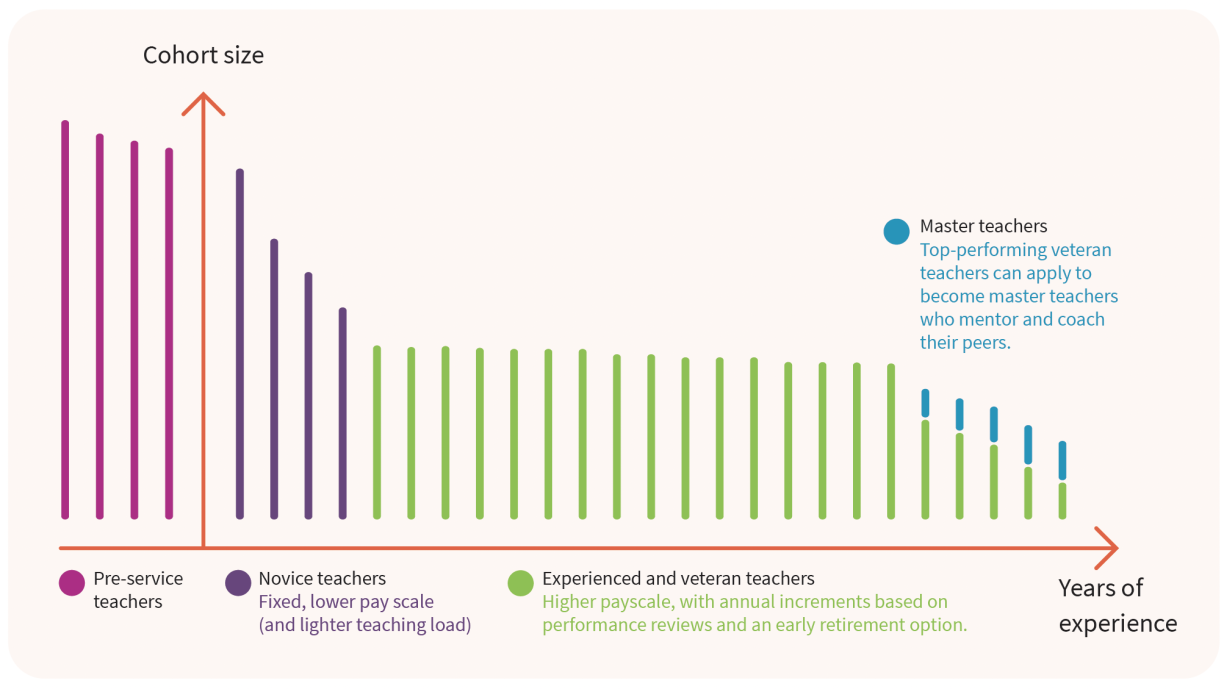
Source: Hwa and Pritchett (2021)
There is no single blueprint for transforming an education system. Rather, adaptation and iteration are the key to success. When programmes are adopted without enough adaptation to local problems and context, even a well-designed and well-implemented programme that improved learning elsewhere may have no impact at all.14 Alongside understanding “what works”, it is equally important to understand “how change happens” in each place with its unique history, society, and politics.15
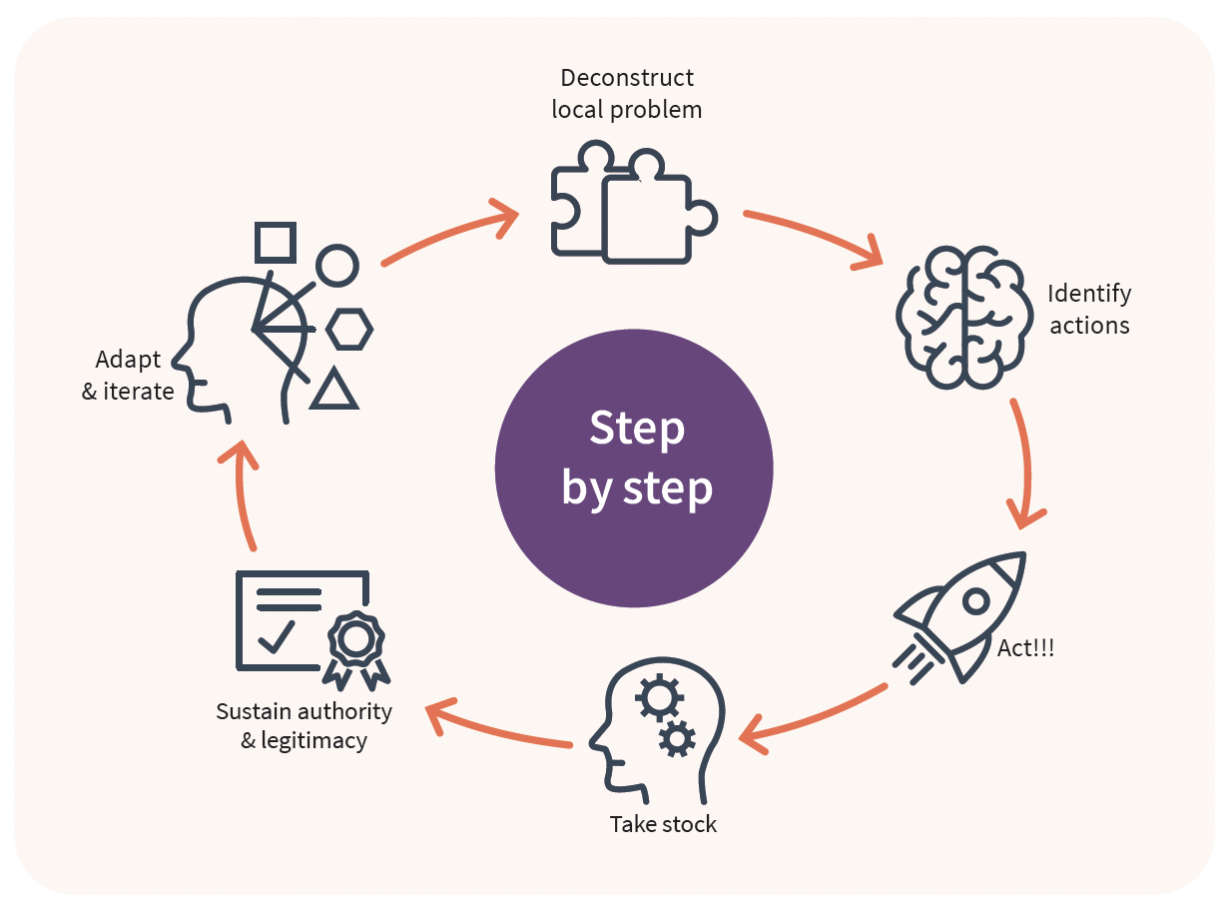
Source: Building State Capability (2018)
A growing number of success stories show that education systems with low learning outcomes can be reoriented to deliver learning.16 However, the transition from a low- to higher-performing system is hard—really hard. To initiate and steer this transition, we have offered five principles for action grounded in systems research. Countries must first build sustained political and societal commitment to universal early mastery of foundational skills. This will allow systems to then measure, align, support, and adapt in ways that serve this purpose.
Awareness of the learning crisis has never been higher; there is gathering resolve to do something about it, and the actions required are eminently doable. For millions of children, nothing less than their dignity, self-worth, and ability to define their own destiny is at stake.
This brochure draws from the policy paper, ‘Focus to Flourish: Five Actions to Accelerate Progress in Learning’. Read the policy paper: bit.ly/5ActionsPaper.
The full citation list can be found at: https://riseprogramme.org/five-actions-brochure-sources
Pritchett, L., Newman, K., and Silberstein, J. 2022. Focus to Flourish: Five Actions to Accelerate Progress in Learning (Policy Brochure). Research on Improving Systems of Education. https://doi.org/10.35489/BSG-RISE-Misc_2022/08